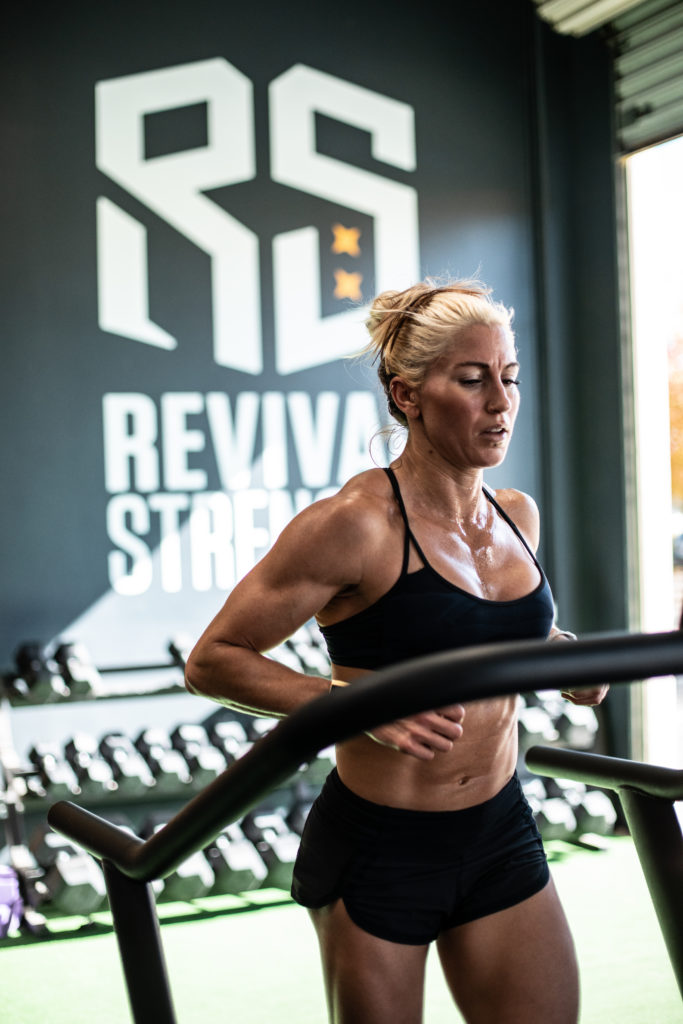- Messages
- 4,053
- Reaction score
- 1,779
- Points
- 113
GET BETTER NUMBERS - FOR BETTER RESULTS
The promise of a macro calculator sounds great. Plug in a few numbers, and get a magic prescription to change your body. Lose weight, build muscle, maintain what you have – select your desire from a drop down menu and you’re off to the races.Unfortunately, real life doesn’t work that way. You’ve still got to take those numbers and figure out how to put them on a plate. Not just one time, but day after day.
And after all that, you still might not see the changes you hoped for. What gives?

Today we’ll go behind the numbers to understand what’s really going on with these macros. There are 3 key points to know that affect how accurate your numbers are – and what happens to your body as a result.
We’ll get into why this is in more detail, so you know how to get closer to what works.
Keep in mind that even after all that, your numbers might not be perfectly accurate to produce your desired result. But the closer they are to start with, the easier the process is. And understanding what impacts the numbers will help guide you whenever you get stuck.
For the purposes of this exercise, we’ll use the Functional Bodybuilding macro calculator – so feel free to follow along.
DANGER ZONE NUMBER 1:
INACCURATE BODY FAT %
For physical stats, our calculator asks for age, height, weight, gender, and body fat %. Why is this?If you enter a body fat %, it will use a formula known to be more accurate than the alternative. If you don’t enter one, it will estimate using an alternative formula, based on the other factors. These estimates make assumptions about typical outputs for different age groups, genders, etc.
The output of these formulas is your Resting Metabolic Rate (RMR). In other words, what your body needs just to exist, without any activity on top. Let me be clear – your activity does not impact this number at all. We’re talking about what you need to breathe, have a heartbeat, etc.
What impacts it is lean muscle mass – the percentage of muscle you have on your body, relative to your overall weight.
The more lean mass you have, the more efficient you are at burning calories simply by existing.
Try it! Pull up the calculator and and input all the fields, including BF%. Now go back and change the age, height, or sex and observe that the Maintenance Calories DO NOT CHANGE.
Note that a super accurate body fat % can also be hard to pin down. You can get a Dexa Scan, an Inbody, or estimate based on measurements or photos. It’s ok if this number isn’t perfect – just keep in mind for later that this number can impact your results.

Takeaway
Building or maintaining lean muscle mass is MASSIVELY important if you want a faster metabolism.DANGER ZONE NUMBER 2:
OVERESTIMATING MOVEMENT
What’s your daily activity level? It sounds like a simple enough question to take a stab at. But many people make a super common mistake.They work hard at the gym! They train 5 times a week! Those workouts are super duper intense! Their activity level must be high, right?
For the purpose of calorie and macro targets, this question refers to the movement in your entire day – not just the hour you spend at the gym.
- Person A trains 2-3x per week with weights, and walks 12k steps per day.
- Person B trains 5-6x per week with weights, but only walks 3-4k steps per day.
- Person A likely has a higher Activity level than Person B.
Try it – change this field on the calculator and see how much it impacts your daily calorie target
A note about goals: these also impact your target number of calories for the day. If you want to lose weight you’ll need to eat less, and if you want to bulk up you’ll need more calories. Keep in mind here that the more aggressive the goal (challenge fat loss vs. recomposition, for example) the faster you’ll see results – but the more challenging it will be to maintain. You can always adjust this if your goal feels hard to stick to.


Takeaway
If you kept everything the same in your life except you walked 2-3k steps more per day, you could maintain your same weight while eating a bit more food.DANGER ZONE NUMBER 3:
LETTING FEAR DECIDE YOUR MACROS
- Is too much protein bad for your kidneys?
- Won’t carbs make you gain weight?
- Aren’t high fat foods bad for cholesterol?
Before you dive down the macro rabbit hole, you have the option to stop right here. Simply eating your calorie target each day – of any type of food – can absolutely change your body. In fact, this is a good first step if macronutrients are just too complex to track.

But it’s also true that the makeup of your food – how much protein, carbs, and fat you eat – affects your body a lot. Each of those macronutrients has a different job to do.
At the very simplest level, protein builds muscle, carbs give you energy, and fat helps your hormones function. How much of each you get can change the way you look, feel, think, and perform.
Our macro calculator lets you select your preferences for different macros. So to help you choose wisely, let’s break through the scary myths to understand how these macros can help you reach your goals.
Protein:
You can’t go wrong with our calculator, since the entire range will build muscle safely. So your choice comes down to a few factors, as well as what you’re likely to stick with.- Low protein – if you have higher body fat and a low calorie target, this lets you eat more variety
- Moderate – if you struggle to eat a lot of protein (getting full easily, hard to source good protein, etc.)
- High – easy to remember since it’s the same as your body weight in pounds. A good target for most.
- Heavy – if you’re already lean and you have a high calorie target
Takeaway
Protein helps build lean muscle mass - which helps you burn more calories at rest (see Danger Zone #1)Carbs:
The idea with Functional Bodybuilding is to pair great nutrition with effective, muscle-building training and movement throughout the day. You’ll need energy for this – so don’t fear the carb! Our range gives you 25% at the low end and up to 55% of your total calories from carbs at the high end.Myth: If I want to be lean and lose fat then I have to go LOW CARB. This is absolutely not true. While it works well for some people, it is simply their way of eating fewer calories each day. The reduction in calories is the KEY variable that helps them lose fat.
The lower the carbs, the higher the fats, and vice versa – so some of this comes down to what you like to eat, and what makes you feel the best.
- Low Carb – the minimum amount to fuel training and for health
- Moderate – good place to start, especially if you’ve feared carbs in the past. You might just find a boost of energy and more positive outcomes.
- High – If you like to train hard and frequently, having more carbs can be a cheat code for better performance and increased muscle growth. Once you repair your relationship with carbs and see them for what they truly can be, a massive support to your training, then many athletes will leverage a high-carb approach.
- Cycle – This style of fluctuating your carbs was a tool many dieters used to psychologically get through periods of caloric deficit. Following a low-carb diet made it easiest for some people to adhere to a caloric deficit. But 1-2 days a week of having higher carbs help them mentally stay engaged by allowing foods they love back in periodically. The higher carb days also could help fuel a couple of highly productive training sessions each week.
Takeaway
Carbs give you energy for better training and moving around more in your day. (see Danger Zone #2)Fat:
Fats are critical for a healthy body to function. You need them for tissue repair, hormonal processes, and brain function. They make up the remaining calories once you have established how much protein and carbohydrate you are going to eat each day.Our calculator doesn’t let you select your fat preference, because fats automatically balance out with carbs.
Common Question – My fat macros seem super high. I’m not used to eating that much fat in a day, what should I do?
This is typically a result of someone selecting Low Carb. They assume they need to eat low carb to lose body fat. But in reality, the Calorie Target they have been given is going to get them towards that goal. By selecting Low Carb they consequently had their Fat grams set higher to make up the remaining calories.
What you should do?
- Go back and select moderate or high carbs instead.
- Go back and select a higher level of protein.
- Go back and double-check that your activity level is set correctly.
TAKE HOME LESSON
Protein is the biggest nutritional lever we can pull to support our Muscle Mass and therefore Resting Metabolic Rate. Therefore, protein is the most important Macro to get right each day. If you hit any of the protein levels provided, along with your target calories, you will be on your way to nutritional success. Additionally, don’t fear Carbs. They can act as an aid to better training performance and more activity each day.Now you know how online nutrition and calorie calculators work. We are going to follow up with an email on how to put this all into practice soon. If you’re not already subscribed to our newsletter, sign up here.
My hope is that you recognize that your mission is not to just follow your MACROS to change your body shape. It is bigger than that. Your macros are also a tool to help you get the most out of your training. Ultimately, the right type of training will have a big impact on your Resting Metabolic Rate and keep you inspired and capable of increasing your activity throughout your day.

